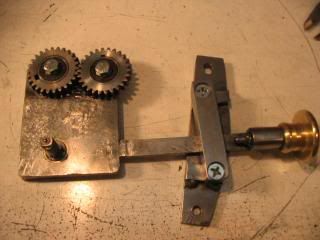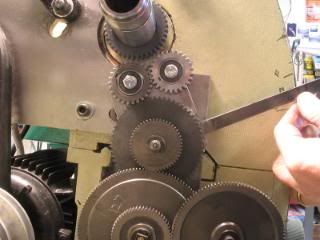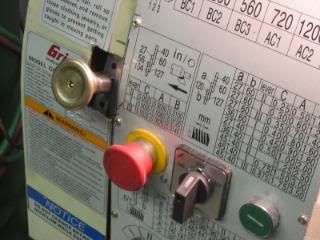If you guys are interested in this and with the moderator's permission I can post a link to where I have the photos and my design for adding the reverse tumbler gears to the G0602 lathe. The reverse tumbler is built from 1/4" cold rolled steel plate and a couple of timing gears from a small engine. I think it was easy to build and will come in very handy and a useful modification to this lathe.
this is the reversing gears with shifting lever the small gears are out of a small engine

reversing gears installed on the lathe

Brass knob for forward, neutral, reverse. makes the G0602 a lot more fun

norman
I've also built a speed reducer for the G0602 lathe. My first try at this will slow the spindle speed down to 58 rpms, I'm working on a newer design to make the slower speeds adjustable by changing the input pulley on the speed reducer.
This speed reducer is built from sand castings and again small engine timing gears. You do not have to use casting to build this,I did because it was a less expensive way for me to make the frame for the speed reducer gear box.
Here's a couple of videos of the reducer and the spindle. Kind of boring, but you can see for yourself.
[ame]http://www.youtube.com/watch?v=qopnUPtaAnU[/ame]
[ame]http://www.youtube.com/watch?v=Pd9_qZR7P0w[/ame]
this is the reversing gears with shifting lever the small gears are out of a small engine

reversing gears installed on the lathe

Brass knob for forward, neutral, reverse. makes the G0602 a lot more fun

norman
I've also built a speed reducer for the G0602 lathe. My first try at this will slow the spindle speed down to 58 rpms, I'm working on a newer design to make the slower speeds adjustable by changing the input pulley on the speed reducer.
This speed reducer is built from sand castings and again small engine timing gears. You do not have to use casting to build this,I did because it was a less expensive way for me to make the frame for the speed reducer gear box.
Here's a couple of videos of the reducer and the spindle. Kind of boring, but you can see for yourself.
[ame]http://www.youtube.com/watch?v=qopnUPtaAnU[/ame]
[ame]http://www.youtube.com/watch?v=Pd9_qZR7P0w[/ame]





